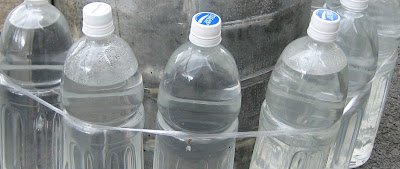
As the semester is about to enter its final week, the time has come to look back and consider how my impressions of Japan might have changed during these past few months.
There are a lot of things actually, but the first thing that leaps to mind is the people. As my language skills have improved (they're still bad) I have become more confident about talking to Japanese that I meet on my walks, and the response has surpassed my expectations. People are overwhelmingly kind, generous and tolerant of my mistake-ridden sentences, and they do their best to answer my often strange questions.
When I came to Japan for the first time some years ago, I thought that Japanese people were supposed to be reserved, but that hasn't been my actual experience at all. This openness might be a Kansai thing, as a lot of Japanese have told me, but I feel like I've been treated the same way in Sapporo, Tokyo and Fukuoka.

Another revelation has been how messy Japan can sometimes be. The rock garden at Ryoan-ji is very stylistically pure and peaceful, but it's not terribly representative of a lot of the Japan that I see around me. The Japan that is cluttered with signs, wires, rusting steel and scruffy-looking apartment buildings.




Before I came here I also expected that Japan would be very new and high-tech. I had read for example, that in big Japanese cities the average lifespan of a building is only around 25 years; that everything is quickly replaced with something newer. In many areas I'm sure that's true, but there are also many examples of the opposite phenomenon - old buildings and stores hanging on. And these places hardly seem to change at all, at least on the outside. They carry the same sign they put up in 1982 or whenever, even if it's worn, faded and totally out of fashion.
I like that. In my home country, the owners would be nervously concerned about what signals they would be sending out if their signs weren't new and pretty. There's an apparent lack of caring about appearances that you often come across outside the major shopping areas that I find refreshing.


This goes for information signs too. I don't know how many rusted or weather-bleached signs I've seen on the streets here. In Sweden they would have been thrown away ages ago, but here they still serve their function. One unit of sign is still one unit of sign, even after wear and tear has made it barely legible anymore, it seems.


I could go on and on, but I need to wrap this up. However, I can't finish without a quick mention of food. When I came to Japan my favorite Japanese food was sushi, but then I really couldn't get much else back in Sweden. Then it was katsudon for a while, but since my time in Sapporo there's one type of food that always fills me with a warm ball of happiness, and this passion has only increased during my semester in Kansai. I am talking of course about ...












